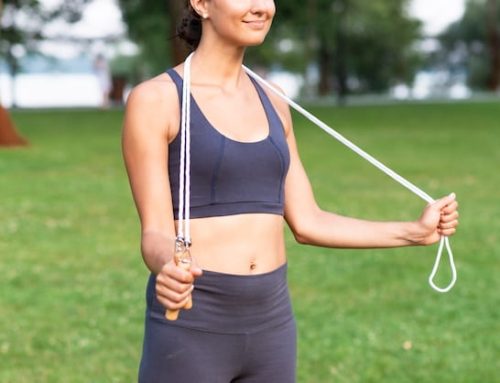The Importance of Jogging in a Boxer’s Training Routine
Boxing is a physically demanding sport that requires various forms of training to enhance a boxer’s performance in the ring. One of the most common exercises in a boxer’s training routine is jogging. While skipping rope is also a popular exercise, jogging provides several unique benefits that make it an essential part of a boxer’s training program.
Improved Cardiovascular Health
Boxing is an aerobic exercise that requires a high level of cardiovascular fitness. Jogging is an excellent way to improve a boxer’s cardiovascular health, making it easier for their heart and lungs to supply oxygen to the muscles during training and competition. A study published in the Journal of Strength and Conditioning Research found that jogging for 30 minutes, three times a week, improved boxers’ cardiorespiratory fitness in just four weeks.
Increased Endurance and Stamina
Boxing matches can last for several rounds, and a boxer must have the endurance and stamina to keep fighting at a high level throughout the entire match. Jogging improves a boxer’s endurance and stamina, allowing them to fight longer and harder in the ring. By incorporating jogging into their training routine, boxers can increase their lung capacity and improve their ability to use oxygen efficiently.
Lower Risk of Injuries
Skipping rope can be a high-impact exercise that can put stress on a boxer’s joints, especially their knees and ankles. Jogging, on the other hand, is a low-impact exercise that puts less stress on the joints, reducing the risk of injury. Additionally, jogging helps to strengthen the muscles around the joints, which can further reduce the risk of injury.
Weight Loss and Body Composition
Boxers must maintain a specific weight to compete in their weight class, making weight loss a common goal for many boxers. Jogging is a great way to burn calories and lose weight, making it an essential part of a boxer’s training program. In addition to weight loss, jogging also helps to improve body composition, increasing lean muscle mass and reducing body fat percentage.
Improved Mental Health
Boxing is a mentally demanding sport that requires focus, concentration, and mental toughness. Jogging has been shown to have several mental health benefits, including reducing stress, anxiety, and depression. By incorporating jogging into their training routine, boxers can improve their mental health, making them more resilient and better able to handle the rigors of training and competition.
Training Routine and Tips
Jogging should be a regular part of a boxer’s training routine, and it’s essential to develop a plan that fits their individual needs and goals. Boxers should start slow and gradually increase their distance and pace over time. It’s recommended to jog for at least 30 minutes a day, three to five days a week.
In addition to jogging, boxers should also incorporate other exercises into their training routine, such as strength training, agility drills, and sparring. It’s essential to have a well-rounded training program that addresses all aspects of boxing, including physical fitness, technical skills, and mental toughness.
Conclusion
Both jogging and skipping rope are staples in a boxer’s training regimen, but they serve different purposes and offer distinct benefits. Here’s why a boxer might engage in both activities rather than sticking to just one:
Benefits of Jogging for Boxers
- Endurance: Jogging helps in building cardiovascular and muscular endurance. It teaches the body how to manage long periods of physical exertion, which is essential in a sport where fights can last multiple rounds.
- Leg Strength: While not as targeted as weightlifting, jogging does improve leg strength. Strong legs are crucial in boxing for movement, balance, and power generation.
- Mental Toughness: The solitary nature of jogging helps a boxer focus and build mental stamina, learning to push through discomfort.
- Active Recovery: For a seasoned athlete, a moderate jogging session can serve as active recovery, helping to keep the blood flowing and muscles loose on off days or after more intense training sessions.
- Caloric Burn: Running is an effective way to manage weight, which can be crucial when trying to make a weight class.
- Terrain Variation: Running outdoors can offer varying terrain, challenging the boxer’s balance, footwork, and focus in ways that a stationary exercise like rope skipping cannot.
- Pacing: Long-distance jogging can help boxers learn pacing, which is crucial in a match where energy conservation can be key.
Benefits of Skipping Rope for Boxers
- Footwork: Skipping rope improves agility, coordination, and footwork, which are all crucial skills in boxing.
- Anaerobic Conditioning: While jogging is excellent for aerobic conditioning, rope skipping can be more anaerobic, particularly when done in intense intervals. This is similar to the high-intensity bursts required in boxing.
- Hand-Eye Coordination: The act of timing your jumps with the rope can improve hand-eye coordination.
- Timing and Rhythm: Skipping rope helps with developing timing and rhythm, which can help with the timing of punches and defensive maneuvers in boxing.
- Convenience: You can skip rope virtually anywhere with minimal equipment, making it a versatile workout option.
- Calves and Lower Leg Strength: The quick, repetitive movements can help strengthen the lower legs, which is beneficial for quick foot movements in the ring.
In summary, jogging and skipping rope are complementary rather than interchangeable. Each offers specific benefits that help prepare a boxer for the rigors of the sport. As such, you’ll often see boxers incorporating both into their training routines.






